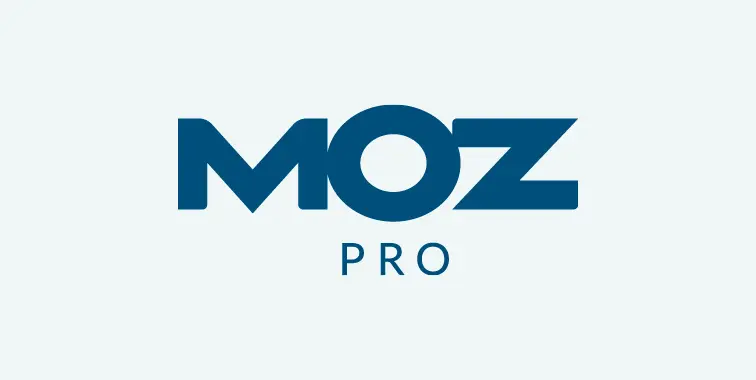This Article has been revised, edited and added to, by Poulomi Chakraborty.
- The Power of Language: More Than Just Translation
- Navigating Design and Aesthetics Across Cultures
- Mastering Market Research for International SEO
- Technical SEO for Global Websites
- The Ongoing Journey of International SEO
- Measuring the Success of Your International SEO Efforts
- Analytics Tools and Techniques
- Integrating Tools Into a Cohesive Strategy
- Step 1: Define Clear Objectives and Key Performance Indicators (KPIs)
- Step 2: Conduct Comprehensive Market Research
- Step 3: Tailor Your Content and SEO Strategy
- Step 4: Optimize User Experience for Global Audiences
- Step 5: Implement Continuous Monitoring and A/B Testing
- Step 6: Utilize Advanced Analytics for Deeper Insights
- Step 7: Integrate Feedback and Iterate
- Harmonizing Your Toolkit for Strategic Insights
- Conclusion
In a world that’s more connected than ever before, businesses and content creators are looking to reach a global audience. But here’s the twist: as the internet erases borders, it also brings to light the myriad of cultural sensitivities that vary from one region to another. Understanding these nuances is not just about being polite; it’s crucial for your success online. Welcome to the intricate dance of Cultural Sensitivities and International SEO. Let’s dive in, shall we?
The Power of Language: More Than Just Translation

When we talk about reaching across the globe, language is the first hurdle that comes to mind. But let’s get one thing straight: translation is not the be-all and end-all of international SEO. It’s about localization, which means adapting your content to fit the cultural context of your audience.
Language and Culture: A Delicate Balancing Act
Imagine you’re launching a marketing campaign for a new product. You’ve got the slogan, “Unlock Your Potential,” and you’re ready to take it worldwide. Easy, right? Just translate it into a few languages, and off you go. Not so fast! Here’s where things get interesting.
Take this slogan to France, and a direct translation might fall flat. French marketing tends to prefer subtlety and charm, often leaning towards poetic or abstract phrases that evoke emotion rather than direct calls to action. So, our straightforward slogan might need to morph into something that captures the French ethos, perhaps focusing on the journey of self-discovery or the art of achieving one’s dreams.
Now, hop over to Japan. Japanese culture values community and harmony above individual achievement. A slogan emphasizing personal potential could be seen as too self-centered. It might need reworking to focus on how unlocking your potential benefits those around you, aligning with the collective spirit.
And it’s not just about the words. Colors, images, and website design also play significant roles. What’s considered appealing or professional in one culture can be perceived as tacky or even offensive in another.
SEO and Cultural Sensitivities: A Match Made in Heaven?
So, where does SEO fit into all of this? SEO isn’t just about getting to the top of Google’s search results; it’s about connecting with your audience in a way that’s meaningful and respectful. That means understanding not just the keywords they use, but the intent behind those searches. What are they really looking for? What concerns or desires are driving them to type those words into the search bar?
In our global marketplace, this understanding becomes even more crucial. A keyword that works well in the US might have a completely different connotation in another country, even if the language is the same. For instance, “football” means something entirely different in the US compared to the UK.
This is where cultural sensitivities come into play. By tailoring your content to reflect the values and norms of your target audience, you’re not just avoiding potential faux pas; you’re building trust. And in the world of SEO, trust translates to higher rankings, more engagement, and ultimately, more success.
Navigating Design and Aesthetics Across Cultures

Moving beyond the realm of language, let’s delve into the visual aspects of international SEO: design and aesthetics. It’s a fascinating world where colors, layout, and imagery speak volumes, sometimes louder than words. This section will explore how these elements impact audience perception and engagement across different cultures.
The Psychology of Color in Global Markets
Color is not just a visual element; it’s a powerful communicator. Its impact on consumer behavior is well-documented, but here’s the twist: colors don’t speak the same language globally. What signifies joy and prosperity in one culture could represent mourning in another.
For instance, consider the color white. In many Western countries, white is associated with purity and peace, often used in weddings. However, in some Asian countries, white is the color of mourning and funerals. Imagine launching a product with a predominantly white website design in China without considering this cultural nuance. Instead of attracting your audience, you could inadvertently alienate them.
Similarly, red is celebrated for its vibrancy and is a symbol of luck and prosperity in China. Yet, in South Africa, red is associated with mourning. This stark contrast in perception underscores the necessity for cultural sensitivity in color choices for international SEO efforts.
Imagery and Visual Storytelling: A Cultural Lens
Imagery, like color, is deeply embedded in cultural context. Visuals that are appealing and engaging in one culture may be ineffective or offensive in another. The key to success lies in understanding the symbolic meanings and stories that resonate with your target audience.
Let’s take the example of using animals in marketing imagery. In many Western cultures, owls symbolize wisdom and are often used to represent knowledge-based services or products. However, in some cultures, owls are considered bad omens. Using an owl as a mascot for an educational platform might not go over well in these regions.
Similarly, gestures and body language in images can have vastly different interpretations. A thumbs-up sign is generally positive in the United States but can be offensive in parts of the Middle East and South America. This highlights the importance of not only translating your message into the local language but also localizing your visual content to fit cultural norms and values.
Layout and User Experience: Beyond Aesthetics
When we think of design, it’s easy to focus solely on aesthetics. However, layout and user experience (UX) design are equally important in international SEO. Cultural factors heavily influence how users interact with websites and what they consider a positive or negative experience.
For example, high-context cultures (such as many Asian countries) appreciate websites that provide detailed information and context, preferring a more narrative style of communication. In contrast, low-context cultures (like the United States and Germany) favor websites that get straight to the point, with clear and concise information.
Moreover, the structure and navigation of a website can also reflect cultural preferences. A website tailored for a Japanese audience might prioritize harmony and balance, ensuring all elements are in aesthetic alignment. Meanwhile, a website designed for an American audience might focus on efficiency and speed, with bold calls to action and minimalistic design.
Navigating these cultural differences in design, color, imagery, and UX is not just about avoiding blunders; it’s about creating a welcoming and engaging online environment for your international audience. By doing so, you’re not just optimizing for search engines; you’re optimizing for human connections across the globe.
Mastering Market Research for International SEO

Delving into the heart of international SEO requires more than just understanding the basics of cultural sensitivities; it necessitates a deep dive into the specific preferences, behaviors, and expectations of your target markets. This is where market research becomes your compass, guiding you through the complexities of global audiences. Let’s explore how to conduct market research that uncovers the cultural nuances vital for effective international SEO.
Step 1: Identifying Your Target Markets
Before you can understand your audience, you need to know who they are. This might seem straightforward, but in the tapestry of global markets, it’s essential to be specific. Are you targeting urban youth in Brazil or tech-savvy professionals in South Korea? Each segment will have its own set of cultural norms and values.
Begin by analyzing your product or service’s universal appeal and then narrow down the regions where it’s likely to resonate. Use demographic data, industry trends, and competitor analysis to identify these target markets. Remember, the goal is not just to find where your product fits but also to understand the cultural landscape of these regions.
Step 2: Gathering Cultural Insights
Once you’ve pinpointed your target markets, it’s time to immerse yourself in their cultures. This goes beyond surface-level observations to a deep understanding of their values, beliefs, and behaviors. Here are some effective methods to gather these insights:
- Local Experts: Collaborate with local marketers, cultural consultants, or even influencers who can provide firsthand insights into the local culture. They can help you navigate the subtleties of language, symbolism, and social norms that are crucial for your SEO strategy.
- Social Media Analysis: Social platforms are a goldmine of cultural insights. Observe how your target audience interacts online, the hashtags they use, the conversations they’re having, and the content they resonate with. This can also help you identify popular local platforms that you might not be familiar with.
- Consumer Surveys and Focus Groups: Direct feedback from your target audience is invaluable. Use surveys and focus groups to understand their preferences, pain points, and the type of content they find engaging or offensive. Tailor your questions to explore cultural attitudes towards certain themes, colors, or imagery.
- Competitor Analysis: Analyze local competitors or global brands that have successfully entered the market. Study their website design, content strategy, and customer interaction. This can provide clues about what works (and what doesn’t) in the local context.
Step 3: Applying Insights to Your SEO Strategy
With a wealth of cultural insights at your disposal, it’s time to weave them into your international SEO strategy. This involves several key components:
- Keyword Localization: Beyond direct translation, adapt your keywords to fit local search habits and language nuances. This might mean using colloquial terms or local expressions that have a high search volume.
- Content Localization: Tailor your content to reflect local values, stories, and interests. This could involve creating region-specific blog posts, videos, or social media content that resonates on a cultural level.
- User Experience (UX) Adaptation: Customize the UX of your website to match local preferences. This could mean adjusting the layout, navigation, or even payment methods to suit local users.
- Cultural Sensitivity Review: Before launching, conduct a thorough review of your content and design for cultural sensitivities. This is where your collaboration with local experts can prevent potential missteps.
Conducting market research for international SEO is not a one-time task but an ongoing process. As cultures evolve, so too will the ways in which they interact with content online. Staying attuned to these changes and adapting your strategy accordingly will not only boost your SEO success but also ensure that your brand is welcomed and respected across the globe.
Technical SEO for Global Websites

Venturing into the realm of international SEO extends beyond cultural nuances and content localization. It demands a solid foundation in technical SEO to ensure search engines can accurately serve your content to a global audience. This part of our journey delves into the essential technical aspects of SEO for global websites, making sure your site is not just culturally attuned but also technically optimized for international audiences.
Setting Up International SEO Structure
The structure of your website plays a pivotal role in how search engines understand and rank your content for different regions and languages. Here are the primary methods to structure your global website:
- Country Code Top-Level Domain (ccTLD): Using a country-specific domain (.uk, .fr, .jp, etc.) is a strong signal to search engines and users about the intended regional focus of your website. It’s highly effective for targeting specific countries but requires managing multiple domains.
- Subdirectories with gTLDs: This method involves creating region-specific sections within your main website (example.com/fr/ for France). It’s cost-effective and SEO-friendly, as it consolidates domain authority. However, clear geo-targeting settings must be configured in search engine tools.
- Subdomains with gTLDs: Similar to subdirectories, but uses a subdomain for regional content (fr.example.com). This setup allows for more flexibility in server location and easier management of site settings, but it can dilute domain authority without proper cross-linking and canonical tags.
Choosing the right structure depends on your resources, SEO goals, and the extent of your internationalization. It’s crucial to implement hreflang tags correctly across your site(s) to tell Google which version of a page to show based on the user’s language and region, minimizing issues with duplicate content and ensuring a localized user experience.
Technical Optimization for a Global Audience
After structuring your website for international reach, several technical optimizations can enhance performance and user experience globally:
- Server Location and Content Delivery Networks (CDNs): Hosting your site on a server close to your target audience or using a CDN can significantly improve site speed, a critical factor for SEO and user satisfaction.
- Mobile Optimization: Given the high mobile usage rates in many countries, ensuring your site is mobile-friendly is non-negotiable. This includes responsive design, optimized loading times, and localized mobile content.
- Local SEO Signals: Beyond global visibility, consider local SEO practices such as local listings and NAP (Name, Address, Phone Number) consistency for businesses targeting specific cities or regions within a country.
Monitoring and Analytics for International Sites
Expanding globally adds layers of complexity to tracking and analyzing website performance. Use tools like Google Analytics and Google Search Console to segment data by region and language, allowing you to monitor traffic, engagement, and conversion metrics for each target market. This segmentation is invaluable for understanding the effectiveness of your international SEO strategies and making data-driven decisions to optimize them further.
The Ongoing Journey of International SEO
The world of international SEO is dynamic and multifaceted, blending cultural understanding with technical prowess. It’s a continuous process of learning, adapting, and optimizing to connect with audiences around the globe in the most meaningful and effective ways possible.
From conducting in-depth market research to understand cultural nuances, to implementing technical SEO best practices for global websites, every step you take towards international SEO not only broadens your reach but also deepens your connection with diverse audiences.
As you embark on this journey, remember that the ultimate goal of international SEO is not just to be seen but to be understood and valued across cultures. It’s about building bridges with your content, ensuring that no matter where your users are in the world, they can find, access, and engage with your site in a way that resonates with them culturally and linguistically.

Related: Check out our free SEO suite

Measuring the Success of Your International SEO Efforts
As you navigate the complex waters of international SEO, understanding how to measure the success of your efforts is crucial. This ensures that your strategies are effective and provides insights into where adjustments might be needed. Let’s explore the key metrics and tools that can help you gauge the impact of your international SEO campaigns.
Setting the Right KPIs
The first step in measuring success is to establish clear Key Performance Indicators (KPIs). These should align with your overall business goals and the specific objectives of your international expansion. Common KPIs for international SEO include:
- Organic Traffic by Region: Monitoring the volume of visitors coming from organic search in targeted regions helps gauge your visibility in those markets.
- Search Engine Rankings by Country: Tracking how your keywords rank in different countries can provide insights into your content’s relevance and competitiveness in each market.
- Conversion Rates by Language or Region: Understanding how effectively your site engages and converts users in different languages or regions is crucial for evaluating the ROI of your localization efforts.
- Bounce Rate and User Engagement Metrics by Region: Analyzing engagement metrics like bounce rate, session duration, and pages per session for users from different regions can indicate how well your content resonates with international audiences.
Leveraging Analytics Tools

To track these KPIs, you’ll need to leverage analytics tools effectively. Google Analytics is a powerhouse for monitoring website performance, offering features like:
- Geolocation Reporting: This allows you to view your audience’s data segmented by country, city, and language, enabling precise tracking of your international reach.
- Custom Segmentation: Creating custom segments for your international audiences can help you analyze specific behaviors, like how users from a particular country interact with your content versus users from another region.
- Conversion Goals: Setting up conversion goals specific to each target market or language segment can help you measure the effectiveness of your international SEO efforts in driving desired actions, such as purchases or sign-ups.
Understanding Local Search Engines
While Google dominates globally, don’t overlook local search engines in certain markets, such as Baidu in China, Yandex in Russia, and Naver in South Korea. Each of these platforms has its own analytics tools and success metrics. Understanding the nuances of these search engines and leveraging their tools can provide deeper insights into your performance in these specific markets.
Continuous Monitoring and Adaptation
Measuring the success of international SEO is not a one-time task but a continuous process. Search landscapes and user behaviors change, and your strategies should evolve in response. Regularly review your KPIs and analytics data to identify trends, opportunities for improvement, and the effectiveness of your localization efforts. This may involve adjusting your content strategy, refining your keyword targeting, or even reevaluating your website structure for better performance in specific markets.
Beyond the Metrics
Finally, while metrics provide a quantitative measure of success, qualitative feedback can offer invaluable insights. Engaging with your international audience through social media, customer support, and feedback forms can provide direct input on their experience with your site and content. This feedback can highlight areas for improvement that might not be immediately apparent through analytics alone.
Analytics Tools and Techniques
While Google Analytics remains a foundational tool, several other resources can provide deeper insights into your global audience’s behavior and the performance of your international SEO strategies. Let’s dive into some of these tools and techniques that can help elevate your approach.
Google Search Console (GSC)

Google Search Console offers invaluable data directly from Google’s search engine, providing insights into how your site performs in search results. Key features for international SEO include:
- Performance Reports: Track how often your site appears in Google Search, which queries show your site, how often searchers click through for those queries, and more. Segment this data by country to understand your performance in different markets.
- Hreflang Tags Reporting: GSC can help identify issues with your hreflang tags, which are crucial for telling Google which language you are using on a specific page. This ensures that the correct language version of your site is presented to users in different regions.
SEMrush

SEMrush is a powerful tool for comprehensive SEO analysis, including keyword research, competitor analysis, and site audits. Its features beneficial for international SEO include:
- Keyword Magic Tool: Discover which keywords are popular in different countries and languages, allowing you to tailor your content to local search trends.
- Position Tracking: Monitor your rankings for specific keywords across different regions and devices, giving you a clear view of your international SEO performance.
Ahrefs

Ahrefs offers a suite of tools for SEO analysis, including backlink research, content research, and keyword tracking. For international SEO, its key features include:
- Site Explorer: Analyze your competitors’ search traffic and identify the top pages and content in different countries. This can help you understand what content performs well in specific markets.
- Keywords Explorer: Research the search volume of specific keywords in over 170 countries, helping you to identify high-potential keywords for your international campaigns.
Moz Pro

Moz Pro provides a range of SEO tools, including site audits, rank tracking, and keyword research. Its international SEO capabilities include:
- Rank Tracking: Track your global search engine rankings over time and monitor your performance in the SERPs for different countries and languages.
- Keyword Explorer: Research keywords by country, finding local search volume and competition levels to inform your content strategy.
Google Analytics 4 (GA4)

While Google Analytics is a staple, Google Analytics 4 introduces new features and a more user-centric model of data collection and analysis, making it even more valuable for international SEO:
- Enhanced User Insights: GA4 focuses on user engagement over sessions, offering deeper insights into how users interact with your site across different countries and devices.
- Event Tracking: Custom events and conversions in GA4 allow for more nuanced tracking of user actions, helping you understand the effectiveness of your content and calls to action in various markets.
Advanced Techniques
Beyond tools, some advanced techniques can enhance your international SEO efforts:
- User Behavior Analysis: Use heatmapping tools like Hotjar or Crazy Egg to visualize how users from different countries interact with your site. This can reveal cultural preferences in navigation and content interaction.
- A/B Testing: Conduct A/B tests on your international content and landing pages using tools like Optimizely or VWO. This can help you fine-tune your messaging, design, and calls to action for different regions.
Each of these tools and techniques offers unique insights into your international audience and the effectiveness of your SEO strategies. By leveraging a combination of these resources, you can gain a comprehensive understanding of your global presence, tailor your content and marketing efforts to meet the needs of different markets, and ultimately, drive better results from your international SEO campaigns.
Integrating Tools Into a Cohesive Strategy
Integrating various analytics tools into a cohesive international SEO strategy requires a systematic approach that aligns with your overarching business goals. The goal is not just to collect data but to glean actionable insights that drive decision-making and optimization efforts. Let’s break down how to harmonize these tools and techniques into a unified strategy that boosts your global online presence.
Step 1: Define Clear Objectives and Key Performance Indicators (KPIs)
Start by setting specific, measurable goals for your international SEO efforts. These could range from increasing organic traffic in particular regions to boosting conversion rates for specific language versions of your site. Corresponding KPIs might include regional search rankings, traffic by country, conversion rate by language, and user engagement metrics.
Step 2: Conduct Comprehensive Market Research
Use SEMrush or Ahrefs to conduct market research, identifying high-potential keywords and content opportunities. Analyze competitor strategies in different markets to understand what works and where there may be gaps. Incorporate insights from Google Search Console to understand how your existing content performs across different regions and languages.
Step 3: Tailor Your Content and SEO Strategy
Based on your research, develop a content strategy that resonates with each target market. Use insights from keyword research tools to tailor your content’s language, tone, and topics to match local search behaviors and preferences. Ensure technical SEO elements like hreflang tags are correctly implemented for multilingual or multi-regional sites, with Google Search Console serving as a checkpoint for accuracy.
Step 4: Optimize User Experience for Global Audiences
Leverage Google Analytics 4 and user behavior analysis tools like Hotjar to understand how international audiences interact with your site. Look for patterns in navigation, content engagement, and conversion actions. Use this data to optimize the user experience, ensuring it aligns with the preferences and expectations of each target market.
Step 5: Implement Continuous Monitoring and A/B Testing
Set up ongoing monitoring using a combination of Google Analytics, Google Search Console, SEMrush, and Ahrefs. Track your KPIs over time to gauge the effectiveness of your strategies in different regions. Use A/B testing tools like Optimizely to refine landing pages, calls to action, and other key elements based on real user data, ensuring that your site is continually optimized for conversion and engagement.
Step 6: Utilize Advanced Analytics for Deeper Insights
Dive deeper into analytics with Google Analytics 4’s advanced segmentation and event tracking features. Analyze user paths, conversion funnels, and specific actions to uncover insights into how different audiences interact with your content and what drives conversions. Tailor your content and marketing strategies based on these insights to better meet the needs of each target audience.
Step 7: Integrate Feedback and Iterate
Incorporate direct feedback from international users to refine your approach further. Engage with your audience through social media, surveys, and feedback forms to gather qualitative insights that can inform content updates, design changes, and new strategies.
Harmonizing Your Toolkit for Strategic Insights
A cohesive international SEO strategy involves not just using these tools in isolation but integrating them for comprehensive insights. For instance:
- Use SEMrush or Ahrefs for initial keyword and market research, then cross-reference with Google Analytics and Search Console data to refine your focus and understand your current performance baseline.
- Implement changes based on insights from one tool and use others to measure the impact. For example, after optimizing content for targeted keywords identified in Ahrefs, use Google Analytics and Search Console to monitor changes in traffic, rankings, and engagement.
- Use qualitative feedback and behavior analysis to inform A/B tests, then leverage analytics tools to measure the impact of those tests on user behavior and conversion rates.
By strategically integrating these tools and techniques, you can develop a dynamic international SEO strategy that adapts to the unique characteristics of each market you’re targeting. This approach not only enhances your global visibility and engagement but also drives continuous improvement and growth in your international SEO efforts.
Conclusion
Navigating international SEO is akin to setting sail on a vast ocean, with each market representing a unique constellation under the global sky. The key to a successful voyage lies in crafting a strategy that’s both flexible and precise, harnessing the power of analytics tools to understand the diverse currents and winds of global search trends. By integrating these tools into a cohesive strategy, businesses can map out the digital landscape, tailoring their content and user experience to resonate deeply with audiences across borders.
This journey demands continuous learning and adaptation, but the rewards—increased visibility, engagement, and conversion—are well worth the effort. As the digital world evolves, so too must our strategies, always with an eye towards the rich tapestry of cultures that make up our global audience. In doing so, we not only reach across the digital divide but also connect more meaningfully with people around the world, building bridges with our content in a way that honors the diversity and richness of the global community.
Read Next
- Role of Technical SEO in Google Search Rankings
- On-Page SEO: Best Practices for Higher Rankings
- Keyword Research in SEO: The Definitive Guide!
- Why Internal Linking is So Important for SEO
- What Is Schema Markup in SEO & How to Implement Structured Data






















Comments are closed.